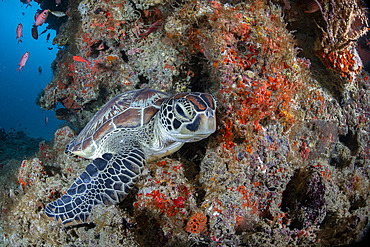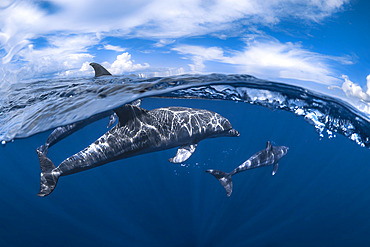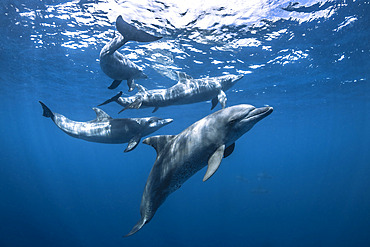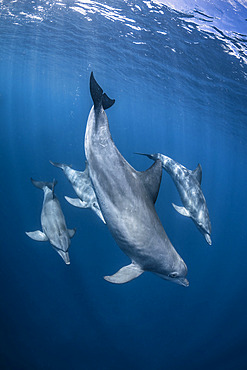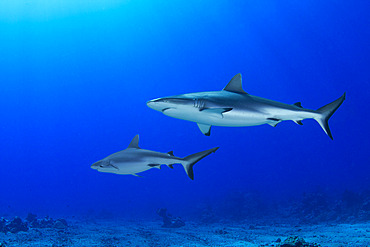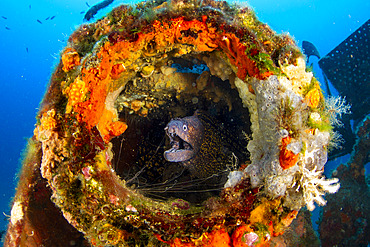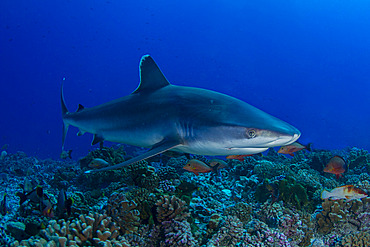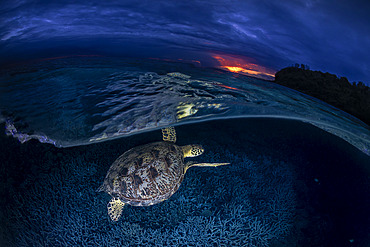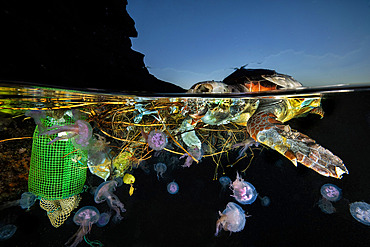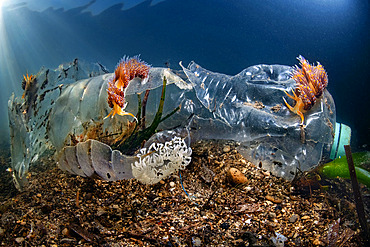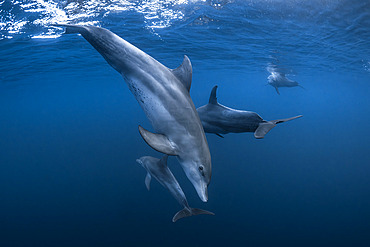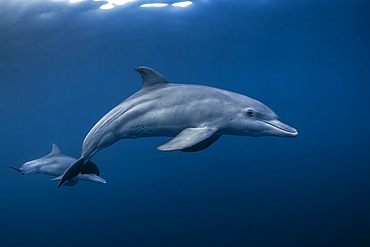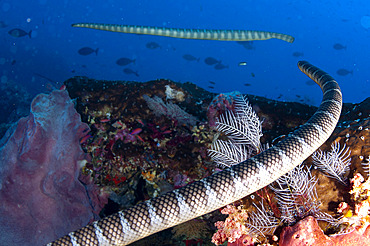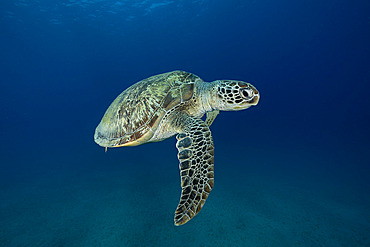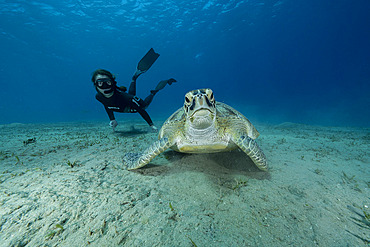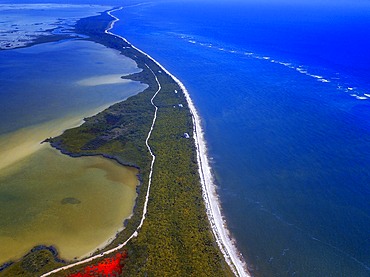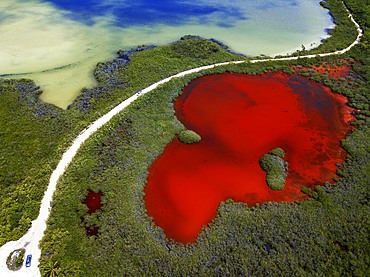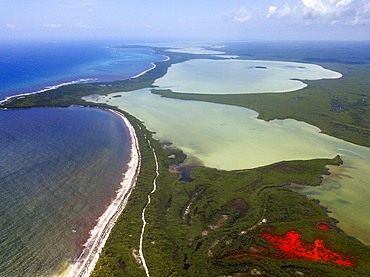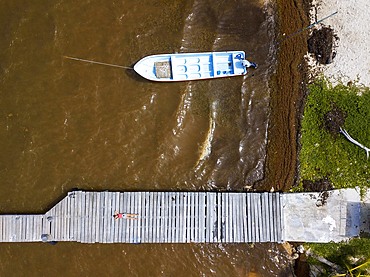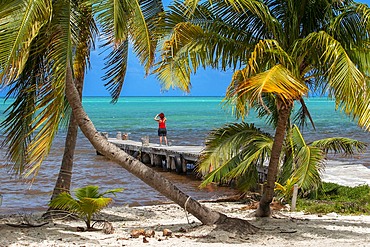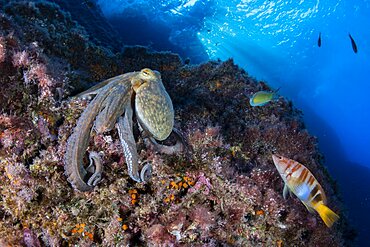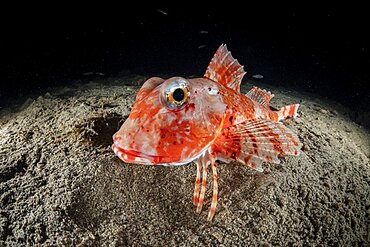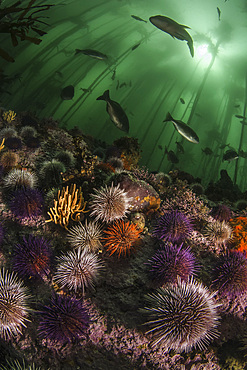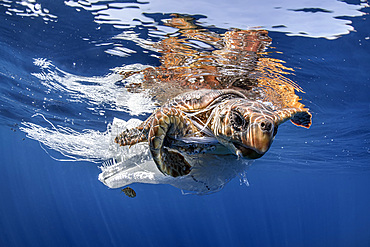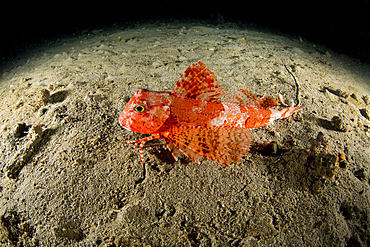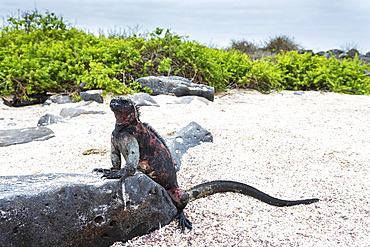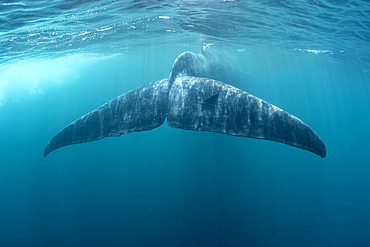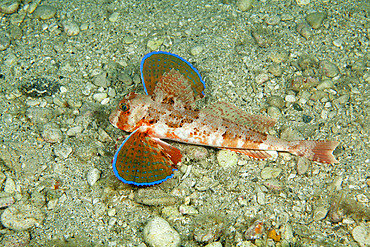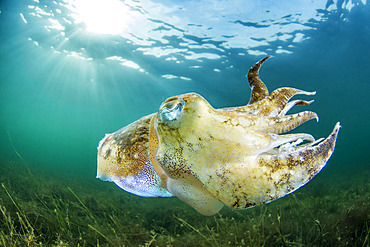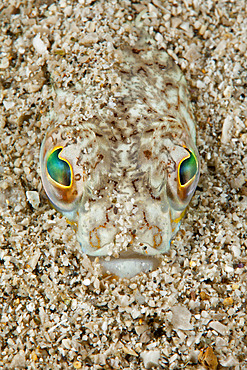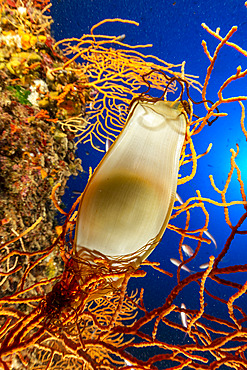Recent searches
Loading...
860-292372 - Green sea turtle (Chelonia mydas) on the reef, Maldives, Indian Ocean
860-292369 - Green sea turtle (Chelonia mydas) on the reef, Maldives, Indian Ocean
860-292302 - Indian Ocean bottlenose dolphin (Tursiops aduncus) in Mayotte lagoon.
860-292300 - Indian Ocean bottlenose dolphin (Tursiops aduncus) in Mayotte lagoon.
860-292301 - Indian Ocean bottlenose dolphin (Tursiops aduncus) in Mayotte lagoon.
860-292279 - Two Grey Reef Sharks (Carcharhinus amblyrhynchos) swimming above the bottom, Tahiti, French Polynesia
860-292128 - Low-angle view of a wall of Silver-tip Sharks (Carcharhinus albimarginatus), Rangiroa, Tuamotu, French Polynesia
860-292126 - Common moray (Muraena helena) in a wreck structure, Saint Raphaël, Var, France
860-292125 - Silvertip shark (Carcharhinus albimarginatus) above the reef, Rangiroa, Tuamotu, French Polynesia
860-292105 - Humpback whale (Megaptera novaeangliae) and Indo-Pacific bottlenose dolphin (Tursiops aduncus). Group of active whales followed by a school of dolphins in the clear waters of Reunion Island.
860-292102 - Green turtle (Chelonia mydas) at blue hour on N'gouja beach, Mayotte
860-291970 - Loggerhead sea turtle (Caretta caretta) and jellyfishes in floating wastes, Procida Island, Tyrrhenian Sea, Mediterranean Sea
860-291968 - Four-colour nudibranch (Godiva quadricolor), Laguna Torrefumo, Gulf of Naples, Tyrrhenian Sea, Mediterranean Sea
860-291967 - Four-colour nudibranch (Godiva quadricolor) on a plastic bottle in Laguna Torrefumo, Mediterranean sea, Italy
860-291965 - Indian Ocean bottlenose dolphin (Tursiops aduncus) group swimming in the blue waters of the Mayotte lagoon.
860-291966 - Indian Ocean bottlenose dolphin (Tursiops aduncus) group swimming in the blue waters of the Mayotte lagoon.
860-291964 - Indian Ocean bottlenose dolphin (Tursiops aduncus) pair swimming in the blue waters of the Mayotte lagoon.
860-291932 - Pair of Chinese Sea Snakes (Laticauda semifasciata) swimming, Snake Ridge dive site, Gunung Api, Banda Sea, Indonesia
860-291910 - Green turtle (Chelonia mydas) swimming back to the surface to breathe after feeding on seagrass. Abu Dabbab Bay, Marsa Alam, Egypt, Red Sea
860-291909 - Freediver watching a Green turtle (Chelonia mydas) feeding on seagrass at the bottom. Abu Dabbab Bay, Marsa Alam, Egypt, Red Sea
860-291625 - Grey reef shark (Carcharhinus amblyrhynchos) in a cave at a depth of 60 metres. Mayotte
1350-6627 - Aerial view of Punta Allen Sian Ka'an Reserve, Yucatan Peninsula, Mexico. Red lagoon near Boca Paila Bridge.
In the language of the Mayan peoples who once inhabited this region, Sian Ka'an means Origin of the Sky. Located on the east coast of the Yucatán peninsula, this biosphere reserve contains tropical forests, mangroves and marshes, as well as a large marine section intersected by a barrier reef. It provides a habitat for a remarkably rich flora and a fauna comprising more than 300 species of birds, as well as a large number of the region's characteristic terrestrial vertebrates, which cohabit in the diverse environment formed by its complex hydrological system.
Along its roughly 120 kilometres of coastline, the property covers over 400,000 hectares of land ranging from sea level to only ten m.a.s.l. The property boasts diverse tropical forests, palm savannah, one of the most pristine wetlands in the region, lagoons, extensive mangrove stands, as well as sandy beaches and dunes. The 120,000 hectares of marine area protect a valuable part of the Mesoamerican Barrier Reef and seagrass beds in the shallow bays. The lush green of the forests and the many shades of blue of the lagoons and the Caribbean Sea under a wide sky offer fascinating visual impressions.
1350-6623 - Aerial view of Punta Allen Sian Ka'an Reserve, Yucatan Peninsula, Mexico. Red lagoon near Boca Paila Bridge.
In the language of the Mayan peoples who once inhabited this region, Sian Ka'an means Origin of the Sky. Located on the east coast of the Yucatán peninsula, this biosphere reserve contains tropical forests, mangroves and marshes, as well as a large marine section intersected by a barrier reef. It provides a habitat for a remarkably rich flora and a fauna comprising more than 300 species of birds, as well as a large number of the region's characteristic terrestrial vertebrates, which cohabit in the diverse environment formed by its complex hydrological system.
Along its roughly 120 kilometres of coastline, the property covers over 400,000 hectares of land ranging from sea level to only ten m.a.s.l. The property boasts diverse tropical forests, palm savannah, one of the most pristine wetlands in the region, lagoons, extensive mangrove stands, as well as sandy beaches and dunes. The 120,000 hectares of marine area protect a valuable part of the Mesoamerican Barrier Reef and seagrass beds in the shallow bays. The lush green of the forests and the many shades of blue of the lagoons and the Caribbean Sea under a wide sky offer fascinating visual impressions.
1350-6625 - Aerial view of Punta Allen Sian Ka'an Reserve, Yucatan Peninsula, Mexico. Red lagoon near Boca Paila Bridge.
In the language of the Mayan peoples who once inhabited this region, Sian Ka'an means Origin of the Sky. Located on the east coast of the Yucatán peninsula, this biosphere reserve contains tropical forests, mangroves and marshes, as well as a large marine section intersected by a barrier reef. It provides a habitat for a remarkably rich flora and a fauna comprising more than 300 species of birds, as well as a large number of the region's characteristic terrestrial vertebrates, which cohabit in the diverse environment formed by its complex hydrological system.
Along its roughly 120 kilometres of coastline, the property covers over 400,000 hectares of land ranging from sea level to only ten m.a.s.l. The property boasts diverse tropical forests, palm savannah, one of the most pristine wetlands in the region, lagoons, extensive mangrove stands, as well as sandy beaches and dunes. The 120,000 hectares of marine area protect a valuable part of the Mesoamerican Barrier Reef and seagrass beds in the shallow bays. The lush green of the forests and the many shades of blue of the lagoons and the Caribbean Sea under a wide sky offer fascinating visual impressions.
1350-6620 - Aerial view of Punta Allen Sian Ka'an Reserve, Yucatan Peninsula, Mexico. Red lagoon near Boca Paila Bridge.
In the language of the Mayan peoples who once inhabited this region, Sian Ka'an means Origin of the Sky. Located on the east coast of the Yucatán peninsula, this biosphere reserve contains tropical forests, mangroves and marshes, as well as a large marine section intersected by a barrier reef. It provides a habitat for a remarkably rich flora and a fauna comprising more than 300 species of birds, as well as a large number of the region's characteristic terrestrial vertebrates, which cohabit in the diverse environment formed by its complex hydrological system.
Along its roughly 120 kilometres of coastline, the property covers over 400,000 hectares of land ranging from sea level to only ten m.a.s.l. The property boasts diverse tropical forests, palm savannah, one of the most pristine wetlands in the region, lagoons, extensive mangrove stands, as well as sandy beaches and dunes. The 120,000 hectares of marine area protect a valuable part of the Mesoamerican Barrier Reef and seagrass beds in the shallow bays. The lush green of the forests and the many shades of blue of the lagoons and the Caribbean Sea under a wide sky offer fascinating visual impressions.
1350-6616 - Aerial view of Punta Allen Sian Ka'an Reserve, Yucatan Peninsula, Mexico.
In the language of the Mayan peoples who once inhabited this region, Sian Ka'an means Origin of the Sky. Located on the east coast of the Yucatán peninsula, this biosphere reserve contains tropical forests, mangroves and marshes, as well as a large marine section intersected by a barrier reef. It provides a habitat for a remarkably rich flora and a fauna comprising more than 300 species of birds, as well as a large number of the region's characteristic terrestrial vertebrates, which cohabit in the diverse environment formed by its complex hydrological system.
Along its roughly 120 kilometres of coastline, the property covers over 400,000 hectares of land ranging from sea level to only ten m.a.s.l. The property boasts diverse tropical forests, palm savannah, one of the most pristine wetlands in the region, lagoons, extensive mangrove stands, as well as sandy beaches and dunes. The 120,000 hectares of marine area protect a valuable part of the Mesoamerican Barrier Reef and seagrass beds in the shallow bays. The lush green of the forests and the many shades of blue of the lagoons and the Caribbean Sea under a wide sky offer fascinating visual impressions.
1350-6615 - Palms and old pier in Punta Allen Sian Ka'an Reserve, Yucatan Peninsula, Mexico.
In the language of the Mayan peoples who once inhabited this region, Sian Ka'an means Origin of the Sky. Located on the east coast of the Yucatán peninsula, this biosphere reserve contains tropical forests, mangroves and marshes, as well as a large marine section intersected by a barrier reef. It provides a habitat for a remarkably rich flora and a fauna comprising more than 300 species of birds, as well as a large number of the region's characteristic terrestrial vertebrates, which cohabit in the diverse environment formed by its complex hydrological system.
Along its roughly 120 kilometres of coastline, the property covers over 400,000 hectares of land ranging from sea level to only ten m.a.s.l. The property boasts diverse tropical forests, palm savannah, one of the most pristine wetlands in the region, lagoons, extensive mangrove stands, as well as sandy beaches and dunes. The 120,000 hectares of marine area protect a valuable part of the Mesoamerican Barrier Reef and seagrass beds in the shallow bays. The lush green of the forests and the many shades of blue of the lagoons and the Caribbean Sea under a wide sky offer fascinating visual impressions.
1350-6678 - Strawberry Poison Frog (Dendrobates pumilio), adult, Bastimentos National Park, Bocas del Toro, Panama. The strawberry poison frog or strawberry poison-dart frog (Oophaga pumilio or Dendrobates pumilio) is a species of small amphibian poison dart frog found in Central America. It is common throughout its range, which extends from eastern central Nicaragua through Costa Rica and northwestern Panama. The species is often found in humid lowlands and premontane forest, but large populations are also found in disturbed areas such as plantations. The strawberry poison frog is perhaps most famous for its widespread variation in coloration, comprising approximately 15���30 color morphs, most of which are presumed to be true-breeding. O. pumilio, while not the most poisonous of the dendrobatids, is the most toxic member of its genus. The species is most diverse in Panama with varieties in vivid shades of all red, orange, blue, yellow or green, green and yellow, white with red, orange or black and spotted varieties. The most colorful mix is found in Isla Bastimentos Marine National Park though not all in one place. Colors vary by location. A beach on the north side of the island is named after the species. Two of Southern Explorations' Panama tours visit red frog habitat. Both the eight-day Panama Adventure trip and eleven-day Panama Highlights trip spend time in Isla Bastimentos Marine National Park and the former also goes to Red Frog Beach.
The red frog is not as poisonous as some of its cousins and is not a threat to humans. It subsists on a diet of ants that dine on poisonous plants, providing the red frog its protective skin toxin. Males attract females with a loud quick chirp. To hear the distinctive sound before you depart on your Panama tours, go to the University of Michigan Museum's biodiversity website (www.animaldiversity.ummz.umich.edu.) After birth, the tadpoles climb aboard the mother who deposits them in different protected areas where she retu
1350-6537 - Split shot of a large barrel jellyfish (Rhizostoma pulmo) with the wreck of the small steam ship Kaffir in the background. A moody cloudy sky with textured clouds is above. Ayr, Scotland.
860-291099 - Loggerheads (Caretta caretta), is a species of oceanic turtle distributed throughout the world. But persistent population declines due to pollution, shrimp trawling, and development in their nesting areas. Listed as Vulnerable IUCN. Terceira island, Azores, Portugal, Atlantic Ocean
860-291319 - Common octopus (Octopus vulgaris), followed from painted comber (Serranus scriba). Marine Protected area Punta Campanella, Massa Lubrense, Penisola Sorrentina, Costa Amalfitana, Italy, Tyrrhenian Sea, Mediterranean
860-291178 - Dolphin (Delphinus delphis) is jumping out at high speed out of the water. South Africa. False Bay.
860-291102 - Loggerhead turtle (caretta caretta) accompanied by imperial blackfish (Schedophilus ovalis) swimming below the surface. Azores, Portugal, Atlantic Ocean.
860-291053 - Salps, also known colloquially as ?sea grape?) or salpa, salpae or salpas is a barrel-shaped, planktic tunicate. Antarctic Peninsula, Antarctica
860-291054 - Anemone (Urticinopsis antarctica). It is a filter feeder and opportunistic predator. Antarctic Peninsula, Antarctica
860-291146 - Portrait of the marine iguana (Amblyrhynchus cristatus). Galapagos Islands. Pacific Ocean. Ecuador.
860-291177 - Dolphin (Delphinus delphis) is jumping out at high speed out of the water. South Africa. False Bay.
860-291401 - Green sea turtle (Chelonia mydas) in seagrass - seagrass, sebadal, seba (Cymodocea nodosa). Of all the sea turtles that exist, it is the only omnivorous species, feeding in its subadult and adult state on marine plants and algae. Underwater bottoms of the Canary Islands, Tenerife.
860-291145 - Two marine iguanas (Amblyrhynchus cristatus) are sitting on the rocks against the backdrop of the surf. Galapagos Islands. Pacific Ocean. Ecuador.
860-291321 - Streaked Gurnard (Trigloporus lastoviza), Puolo Bay, Marine Protected area Punta Campanella, Massa Lubrense, Penisola Sorrentina, Costa Amalfitana, Italy, Tyrrhenian Sea, Mediterranean
860-291400 - Green sea turtle (Chelonia mydas) in seagrass - seagrass, sebadal, seba (Cymodocea nodosa). Of all the sea turtles that exist, it is the only omnivorous species, feeding in its subadult and adult state on marine plants and algae. Underwater bottoms of the Canary Islands, Tenerife.
860-291229 - STARFISH (Narcissia canariensis). Endemic species. Detail of the tube feet. Marine invertebrates of the Canary Islands, Tenerife.
860-291320 - White-spotted octopus or grass octopus (Callistoctopus macropus) on a night dive. Puolo Bay, Marine Protected area Punta Campanella, Massa Lubrense, Penisola Sorrentina, Costa Amalfitana, Italy, Tyrrhenian Sea, Mediterranean
860-291097 - The Portuguese man o' war (Physalia physalis), also known as the man-of-war, a marine hydrozoan floating on the surface. Azores, Portugal, Atlantic Ocean.
860-290735 - White spotted octopus (Octopus macropus) on black background. Marine invertebrates of the Canary Islands.
860-290734 - White spotted octopus (Octopus macropus) on black background. Marine invertebrates of the Canary Islands.
860-290736 - White spotted octopus (Octopus macropus) on black background. Marine invertebrates of the Canary Islands.
860-290785 - Sunken excavator. Despite not being heavily colonized by marine species, it can be considered a wreck, or an artificial ecosystem of scenic interest for divers. Underwater bottoms of Tenerife, Canary Islands.
860-290737 - White spotted octopus (Octopus macropus) above bottom. Marine invertebrates of the Canary Islands.
860-290733 - White spotted octopus (Octopus macropus) on black background. Marine invertebrates of the Canary Islands.
1350-6286 - A wolf eel (Anarhichas lupus) bites into its favorite food, a sea urchin.
1350-6283 - Portrait of Mediterranean common octopus (Octopus vulgaris) on a sponge.
1350-6274 - Portrait of a juvenile specimen of damselfish (Chromis chromis). Before taking the typical dark brown color of their adult form, these fishes have magnificent electric blue bands. The juvenile specimens are very small, a few centimeters, and they move with nervous and unpredictable movements without any moment of pause.
1350-6268 - A blacktip shark (Carcharhinus limbatus) swims off the rocky reef of Aliwal Shoal, South Africa
1350-6262 - Sea bottom of False Bay are the natural habitat of sharks, seals, whales and dolphins, South Africa
1350-6276 - Close up of Mediterranean moray (Muraena helena) hunting at night, Italy
1350-6269 - A stargazer fish (Uranoscopus scaber) during a night dive, Italy
1350-6273 - A Steller sea lion (Eumetopias jubatus) speeding in front of the camera, British Columbia, Canada
1350-6271 - A sea turtle (Caretta caretta) striving to get free from a plastic fishing net in Spain
1350-6277 - Close up of the eggs of a common octopus (Octopus vulgaris) in an advanced state of maturation; the eyes of the small octopuses can already be seen. The mother takes care of the eggs, protecting and aerating them without stopping, not eating anymore after laying them, and dying immediately after hatching.
1350-6257 - A nursehound (Scyliorhinus stellaris) watches closely a group of small cod passing by. Shot taken off Chioggia (VE) on one of the many rocky formations developed in the seabed of the upper Adriatic, called Tegnue. These bio-sediments are similar to coral reefs and for this reason they are also called Adriatic coral reefs.
1350-6285 - The graphic and essential shape of a Parapandal shrimp (Plesionika narval) in an unusual shot from above which also highlights the eggs, with their characteristic blue color.
1350-6281 - School of lionfish (Pterois sp.) in the tropical waters of Misool, Indonesia
860-290408 - Streaked gurnard (Trigloporus lastoviza), Puolo Bay, Marine Protected area Punta Campanella, Massa Lubrense, Penisola Sorrentina, Costa Amalfitana, Italy, Tyrrhenian Sea, Mediterranean
860-290418 - Fin whale (Balaenoptera physalus) is the largest baleen whale found in the Mediterranean Sea. It is the world?s second largest cetacean, after the blue whale. Pelagos Sanctuary for Mediterranean Marine Mammals, Mediterranean Sea
860-290424 - Sperm whale, (Physeter macrocephalus). Vulnerable (IUCN). The sperm whale is the largest of the toothed whales. Sperm whales are known to dive as deep as 1,000 meters in search of squid to eat. Pelagos Sanctuary for Mediterranean Marine Mammals, Mediterranean Sea
860-290289 - Marine Iguana (Amblyrhynchus cristatus), Punta Suarez, Espanola Island, Galapagos islands, Ecuador.
860-289867 - Atlantic spotted dolphins (Stenella frontalis), Formigas Islet dive site, 27 miles northeast of Santa Maria Island, Azores, Portugal, Atlantic Ocean
860-289858 - Great hermit crab (Dardanus arrosor). Santa Maria Island, Azores, Portugal, Atlantic Ocean
860-289873 - Nudibranch ( picta azorica). This subspecies is known only from the Azores. Santa Maria Island, Azores, Portugal, Atlantic Ocean
860-289864 - Atlantic spotted dolphins (Stenella frontalis), Formigas Islet dive site, 27 miles northeast of Santa Maria Island, Azores, Portugal, Atlantic Ocean
860-289866 - Atlantic spotted dolphins (Stenella frontalis), Formigas Islet dive site, 27 miles northeast of Santa Maria Island, Azores, Portugal, Atlantic Ocean
860-290417 - Bottlenose dolphins (Tursiops truncatus) Pelagos Sanctuary for Mediterranean Marine Mammals, France, Mediterranean Sea
860-290271 - contamination: Purple sea urchin (Sphaerechinus granularis).Tenerife, Canary Islands.
860-289959 - Red atlantic ref lobster (Enoplometopus antillensis). Carapace about 15 cm long with circular patterns on each side of the head. It lives in dimly lit environments dome crevices, hollows and caves. Marine invertebrates of the Canary Islands, Tenerife.
860-290409 - Seafan, Red Gorgonian, Paramuricea clavata, Vervece rock, Marine Protected area Punta Campanella, Massa Lubrense, Penisola Sorrentina, Costa Amalfitana, Italy, Tyrrhenian Sea, Mediterranean
860-289980 - Tail of Blue whale (Balaenoptera musculus brevicauda) is the largest animal ever known to have existed. This may be the pygmy sub-species of blue whale, Balaenoptera musculus. Mirissa, Sri Lanka, Indian Ocean Photo taken under permit
860-290094 - Tub gurnard, Chelidonichthys lucerna, Puolo Bay, Marine Protected area Punta Campanella, Massa Lubrense, Penisola Sorrentina, Costa Amalfitana, Italy, Tyrrhenian Sea, Mediterranean
860-289962 - Blue Dragon (Glaucus atlanticus). Small slug that measures only about 2 cm and is generally associated with the Portuguese man of war (Physalia physalis), although it also usually appears in intertidal pools. Marine invertebrates of the Canary Islands, Tenerife.
860-290013 - Actinaria, sand anemone, Condylactis aurantiaca, Ponza island, Italy, Tyrrhenian Sea, Mediterranean
860-289923 - American marine crocodile (Crocodylus acutus) on the detritic bottom of a mangrove channel in the Jardines de la Reina National Park, Cuba
860-290407 - Sea star, (Astropecten aranciacus), Puolo Bay, Marine Protected area Punta Campanella, Massa Lubrense, Penisola Sorrentina, Costa Amalfitana, Italy, Tyrrhenian Sea, Mediterranean
860-289865 - Atlantic spotted dolphins (Stenella frontalis), Formigas Islet dive site, 27 miles northeast of Santa Maria Island, Azores, Portugal, Atlantic Ocean
860-290416 - Risso's dolphin (Grampus griseus), Pelagos Sanctuary for Mediterranean Marine Mammals, France, Mediterranean Sea
860-290422 - Snorkeler with Loggerhead turtle (Caretta caretta), one of the three species found in Mediterranean Sea. Pelagos Sanctuary for Mediterranean Marine Mammals, Mediterranean Sea
860-290062 - Face to face with a green turtle (Chelonia mydas) on the Sawandarek site. Raja Ampat
860-290412 - Two Penta star, Peltaster placenta, Marine Protected area Punta Campanella, Massa Lubrense, Penisola Sorrentina, Costa Amalfitana, Italy, Tyrrhenian Sea, Mediterranean
860-289961 - Atlantic spotted dolphin (Stenella frontalis). Group of dolphins submerged. Tenerife, Canary Islands.
860-290264 - Snakelocks Anemone Opelet (Anemonia viridis) in the port of Cap d'Agde, Herault, Occitania, France.
860-290378 - Orange Coral (Dendrophyllia Ramea). Marine invertebrate, cnidarian. Tenerife, the seabed of the Canary Islands.
860-290067 - Imperial shrimp (Periclimenes imperator) hidden under a Sea cucumber, Mayotte
860-290414 - Hairy triton (Monoflex parthenopeus) Vervece rock, Marine Protected area Punta Campanella, Massa Lubrense, Penisola Sorrentina, Costa Amalfitana, Italy, Tyrrhenian Sea, Mediterranea
860-290033 - Common cuttlefish (Sepia officinalis)swimming in the Thau lagoon, Bouzigues, Herault, Occitania, France.
860-290096 - Greater weever, Trachinus draco, Marine Protected area Punta Campanella, Massa Lubrense, Penisola Sorrentina, Costa Amalfitana, Italy, Tyrrhenian Sea, Mediterranean
860-289960 - Atlantic spotted dolphin (Stenella frontalis). Group of dolphins submerged. Tenerife, Canary Islands.
860-290423 - Sperm whale, (Physeter macrocephalus). Vulnerable (IUCN). The sperm whale is the largest of the toothed whales. Sperm whales are known to dive as deep as 1,000 meters in search of squid to eat.
860-290413 - Catshark egg, (Scyliorhinus sp.), on Yellow gorgonia, (Eunicella cavolini), Marine Protected area Punta Campanella, Massa Lubrense, Penisola Sorrentina, Costa Amalfitana, Italy, Tyrrhenian Sea, Mediterranean
860-290420 - Fin whale (Balaenoptera physalus) is the largest baleen whale found in the Mediterranean Sea. It is the world?s second largest cetacean, after the blue whale. Pelagos Sanctuary for Mediterranean Marine Mammals, Mediterranean Sea
860-289869 - Loggerhead turtle (Caretta caretta) accompanied by pilotfish (Naucrates ductor) swimming near the surface. Santa Maria Island, Azores, Portugal, Atlantic Ocean
